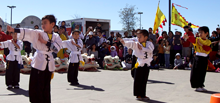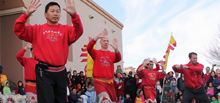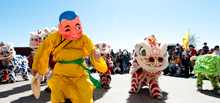
Get trained by the best in the nation!

Learn discipline, and builds self-confidence

Different Group Classes For Every Skill Level

Be a part of the Chin Woo Lion & Dragon Dance Team
This year’s Legends of Kung Fu was featured in Kung Fu Tai Chi magazine.
MORE INFOA video of an amazing performance by the JK Wong Lion Dance Team at the Halliburton Academy in San Antonio, TX.
MORE INFOA video of the shows and performances for 2014 Chinese New Year festivities by the JK Wong Academy instructors and students.
MORE INFOWe were invited to perform at the Garden Party and Street Festival in celebration of the opening of the Crow Collection of Asian Art Sculpture […]
MORE INFOGrandmaster. U.S. Master for the International Chin Woo Federation, and founder and Headmaster of the America Chin Woo center.
MORE INFOLearn the 24 elements that builds speed, power, coordination, perception, balance, flexibility, agility, accuracy, […]
MORE INFOA powerful taijiquan system for health and martial arts. One of the 5 major tai chi styles recognized in China today.
MORE INFOLion dancing is one of the most remarkable traditional arts depicting dignity, unyielding energy and courage.
MORE INFO